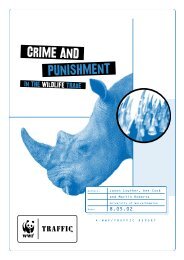In full swing: assessment of trade in orang-utans and ... - WWF UK
In full swing: assessment of trade in orang-utans and ... - WWF UK
In full swing: assessment of trade in orang-utans and ... - WWF UK
Create successful ePaper yourself
Turn your PDF publications into a flip-book with our unique Google optimized e-Paper software.
Prices<br />
Few gibbons <strong>and</strong> <strong>orang</strong>-<strong>utans</strong> were encountered dur<strong>in</strong>g the 2003 survey, <strong>and</strong> most <strong>of</strong> the data on the prices <strong>of</strong> gibbons<br />
<strong>and</strong> <strong>orang</strong>-<strong>utans</strong> are derived from literature searches (see section on Methods). For both gibbons <strong>and</strong> <strong>orang</strong>-<strong>utans</strong>, <strong>in</strong>fants<br />
are <strong>in</strong> much greater dem<strong>and</strong> than juveniles, adolescents or adults, <strong>and</strong> <strong>in</strong>deed many <strong>of</strong> the gibbons that enter the <strong>trade</strong><br />
are still either very young or at least immature. This is even more so for <strong>orang</strong>-<strong>utans</strong>, where <strong>in</strong>fants <strong>and</strong> juveniles make<br />
up the bulk <strong>of</strong> those that are <strong>trade</strong>d. At least at bird markets, prices <strong>of</strong> gibbons <strong>and</strong> <strong>orang</strong>-<strong>utans</strong> decrease with<br />
<strong>in</strong>creas<strong>in</strong>g age, <strong>and</strong> from the scant data available, it is not uncommon for an <strong>in</strong>fant to fetch a price four times that <strong>of</strong> an<br />
adult. At the same time, it cannot be stressed enough that most <strong>of</strong> the prices that were elicited from <strong>trade</strong>rs were only<br />
first quotes, i.e., the seller's orig<strong>in</strong>al request. It is unlikely that these were fixed prices, <strong>and</strong> these would undoubtedly<br />
have gone down with barga<strong>in</strong><strong>in</strong>g. Barga<strong>in</strong><strong>in</strong>g is rarely an option when monitor<strong>in</strong>g bird markets (<strong>and</strong> certa<strong>in</strong>ly not one<br />
the author resorted to) as this implies that one is really expected to buy the animal, but a negotiated purchase price<br />
possibly could be as low as half the <strong>in</strong>itial amount.<br />
Gibbons, exclud<strong>in</strong>g Siamangs, were usually <strong>of</strong>fered for prices between USD50 <strong>and</strong> 150 (IDR426 360 – 1 279 080 at<br />
2003 rate) Although Javan <strong>and</strong> Kloss' Gibbon were on average some 20% more expensive than three other more<br />
common species (Bornean White-bearded Gibbon, Müller’s Gibbon <strong>and</strong> Agile Gibbon), the difference is not significant.<br />
Siamangs were considerably more expensive than the other gibbons <strong>and</strong> the quoted prices range between USD60 <strong>and</strong><br />
USD220 (IDR503 742 – 1 847 054 at 2003 rate), with the lower prices mostly asked for (sub) adults <strong>and</strong> the higher for<br />
<strong>in</strong>fants. As expected, <strong>orang</strong>-<strong>utans</strong> were the most expensive with quotations rang<strong>in</strong>g between USD200 <strong>and</strong> USD1000<br />
(IDR1 679 140 – 8 395 700 at 2003 rate). Over the years 1996-2003, the average quoted price for an <strong>orang</strong>-utan was<br />
around USD400 (IDR3 358 280 at 2003 rate).<br />
The average quoted prices for those species for which data were available are presented <strong>in</strong> Figure 4: the differences<br />
between gibbons (average USD88±40 ), Siamangs (USD157±48 ), <strong>and</strong> <strong>orang</strong>-<strong>utans</strong> (USD406±278 ) are significant.<br />
There was no clear relationship between the rarity <strong>of</strong> the species <strong>and</strong> the price requested at bird markets. Neither were<br />
the species that were rarely encountered at bird markets (Kloss' Gibbon, Bornean White-bearded Gibbon) consistently<br />
more expensive than the more common ones (Agile Gibbon, Müller’s Gibbon), nor are the species that were considered<br />
to be most threatened <strong>in</strong> the wild (Javan <strong>and</strong> Kloss' Gibbon) more expensive than the less threatened species. No<br />
<strong>in</strong>formation was received on prices <strong>of</strong> Sumatran Orang-<strong>utans</strong> <strong>and</strong> although it may be likely that these are somewhat more<br />
expensive than Bornean Orang-<strong>utans</strong>, at the moment the data to support this assertion are lack<strong>in</strong>g.<br />
Despite the widely held belief that prices would differ between smaller <strong>and</strong> larger cities, when <strong>in</strong>formation was obta<strong>in</strong>ed<br />
on prices <strong>of</strong> gibbons <strong>and</strong> <strong>orang</strong>-<strong>utans</strong> (both at bird markets <strong>and</strong> from those that monitor markets), this effect was not<br />
apparent <strong>in</strong> the compiled data set for any <strong>of</strong> the species for which several quotations were available. Undoubtedly, the<br />
price <strong>of</strong> an <strong>in</strong>dividual gibbon or <strong>orang</strong>-utan <strong>in</strong>creases as it moves through the <strong>trade</strong> cha<strong>in</strong> from poacher to middleman to<br />
distributor <strong>and</strong> to <strong>trade</strong>r (Anon, 1998b; Kutilang, 2002). It seems, however, that the variation <strong>in</strong> (quoted) prices is so<br />
large at the latter stages <strong>of</strong> this cha<strong>in</strong> that this effect is difficult to demonstrate.<br />
IN FULL SWING:ASSESSMENT OF TRADE IN ORANGUTANS AND GIBBONS ON JAVA AND BALI,INDONESIA 19


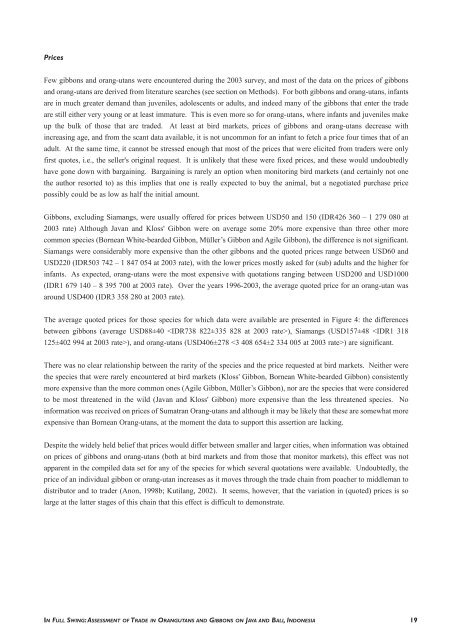
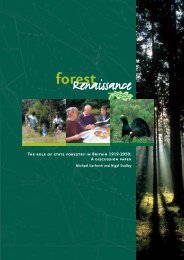
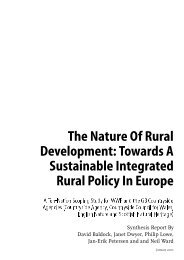
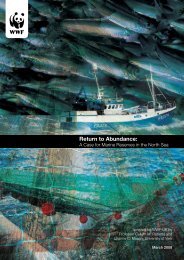
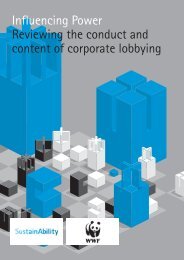
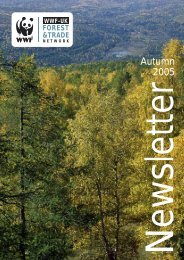

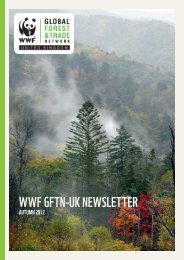
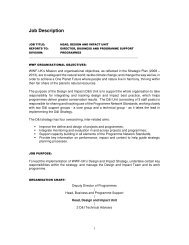
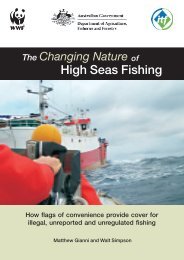
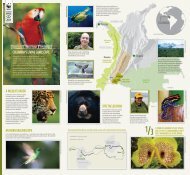
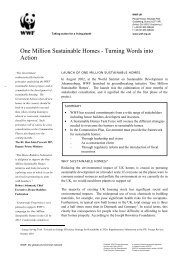
![[PDF] Causes for concern: chemicals and wildlife - WWF UK](https://img.yumpu.com/31929970/1/184x260/pdf-causes-for-concern-chemicals-and-wildlife-wwf-uk.jpg?quality=85)
